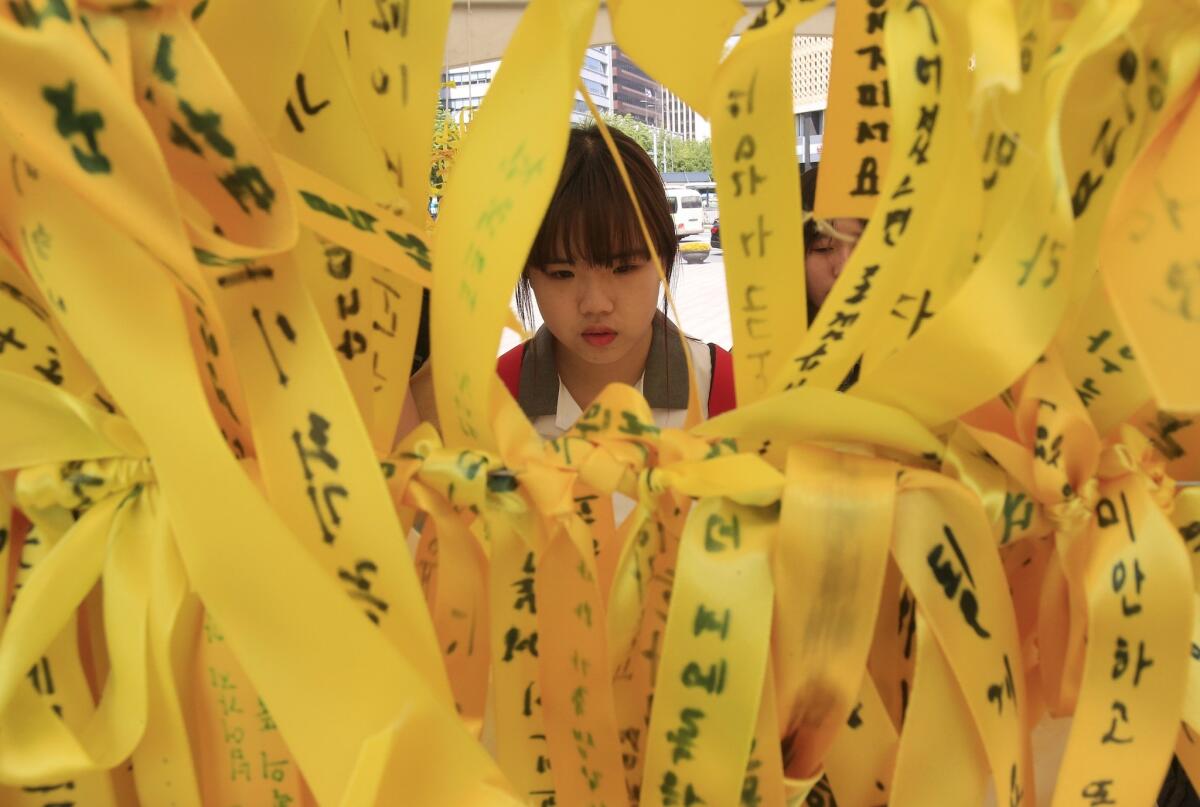South Korea ferry captain, 3 others face homicide charges

The captain and three senior crew members of the ferry that sank last month in South Korea were indicted on homicide charges Thursday, and 11 other crew members were indicted on charges of negligence.
Since the sinking of the Sewol ferry, in which more than 300 people perished, Captain Lee Jun-seok and senior crew members have been under criminal investigation not only for allegedly failing to help passengers escape the sinking vessel but for leaving the ship before passengers had been evacuated.
South Korean law stipulates that a captain must remain on board a distressed vessel until all passengers have gotten off.
The cause of the sinking has not yet been determined, but the captain, crew and owner of the vessel have been harshly criticized for their roles in one of South Korea’s worst maritime tragedies in modern times.
When the Sewol first transmitted distress signals, officials said, the ship was traveling outside its normal course, in fast-moving, busy waters and with a junior helmsman in control. Photos of the captain and crew getting off the Sewol and onto a coast guard rescue boat while the ship sank and lifeboats went unused sparked outrage in South Korea.
“These people thought only of their own lives,” lead prosecutor Ahn Sang-don said Thursday, referring to the captain and crew, during a media briefing in the southern city of Mokpo, the closest city to where the Sewol went down.
No trial date for the captain and the crew members has been set; The homicide charges carry the possibility of death sentences, although such a severe penalty is seen by many observers as unlikely. The death penalty is on the books in South Korea, but there hasn’t been an execution on the country since 1997.
The Sewol went down April 16 after departing from the mainland port of Incheon en route to the holiday island of Jeju; hundreds of high school students were among the passengers. Rescuers saved 172 passengers; 284 bodies have been recovered, and 20 people are still officially listed as missing.
The administration of President Park Geun-hye has also come under fire, with some critics saying the rescue efforts were slow and inadequate. Strong currents and poor visibility made it difficult for divers to reach the hull of the ship.
During Thursday’s briefing, Ahn said the Sewol was overloaded with cargo at the time of its sinking and that the ship did not have the appropriate amount of ballast water in its tanks, which could have made it unstable.
The 20-year-old ship was bought by its operator, Cheonghaejin Marine, in 2012 and refurbished to increase its capacity. That refurbishment could have made it more top-heavy and liable to tip over due to a sudden shift of cargo, officials said. Authorities are also investigating the possibility that a failure by Cheonghaejin to adhere to mandatory safety standards could have caused the accident.
Cheonghaejin is believed to be owned by businessman Yoo Byeong-eun and operated by two of his sons. One son has reportedly fled to the U.S., and on Wednesday, prosecutors said that the son remaining in South Korea had been added to a wanted list because he had ignored a summons asking that he appear for questioning.
Yoo Byeong-eun has been summoned to appear for questioning Friday morning, and could face arrest if he does not appear.
Borowiec is a special correspondent.
More to Read
Sign up for Essential California
The most important California stories and recommendations in your inbox every morning.
You may occasionally receive promotional content from the Los Angeles Times.









